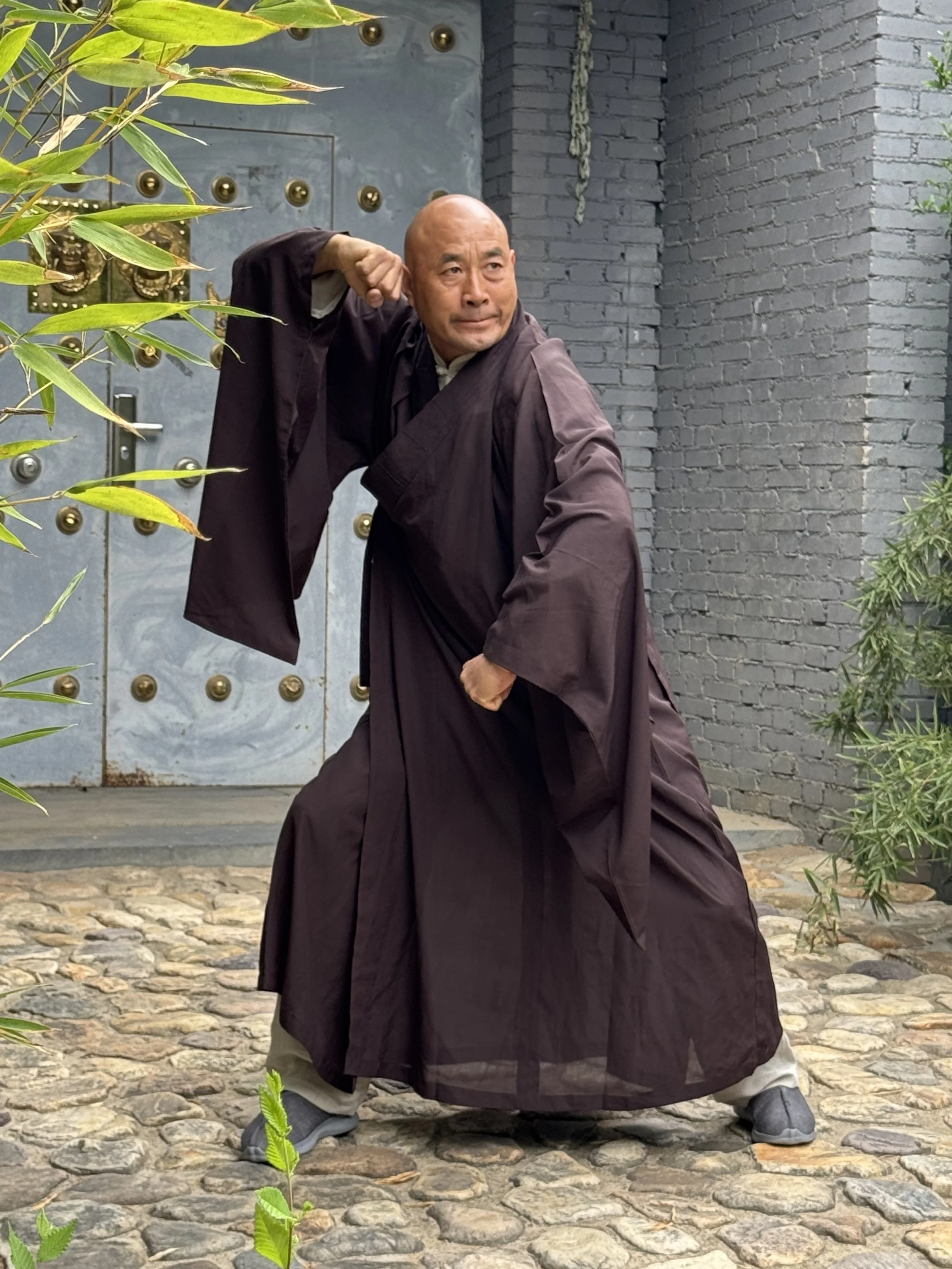The Practice
Internal Shaolin
This may be the only place available where you can find the true integration of Zen and kung fu—where you can train in a style of Shaolin that is slow, internal, and deeply rooted in Chan Buddhism.
While other styles evolved toward performance and fighting, this practice remained hidden, preserved within one family for 150 years. What emerges now is kung fu in its original form: a method for expressing Zen through movement, for aligning the human body with the patterns of nature.
As Shifu Wu Nanfang reminds us: "We practice Chan, not Chuan." Zen, not fighting.
The Effect of Practice on Our Lives
What are we really doing when we make these strange spiralling movements? What happens to our lives through this practice?
As Shifu says: "The purpose is to help your mind become calm, allowing Qi to naturally enter the Dan Tian."
What does this mean?
In a world where our attention is so often ripped away from our centre, this practice helps us return to source.
An internal feeling of fullness and peacefulness from which harmonious activity springs forth naturally.
We've lost connection with our bodies. We live in our heads, move in straight lines, hold chronic tension we don't even notice. We've forgotten how nature moves—in spirals, waves, cycles.
Watch water flow. Study how plants grow. Observe how energy moves through your body when you're truly relaxed. Nothing in nature moves in the rigid, linear patterns of modern life.
Living Meditation
The problem with sitting meditation for many people?
Their energetic systems are polluted with tension, stagnation and other imbalances.
Trying to meditate amidst this internal imbalance can be torturous.
Instead of meditating, we first harmonise the energetic system, through the body, to allow the channels to flow smoothly once more.
Once ready, meditation becomes naturally beautiful.
The Feeling of the Practice
To practice Gulun Kung Fu is to return to your natural state.
Like a tiger roaring in the forest. A monkey leaping across a mountain stream. A bird soaring through vast skies. A horse galloping across boundless plains.
Any forced thought or action creates blockage. When you try too hard, qi stagnates. When you space out, energy scatters. The path lies between—alert but relaxed, focused but natural.
"Your kung fu is like a tree, roots in the ground... like tree roots deeply planted in the soil, but your body sways with the wind very naturally."
The ancient texts speak of reaching a state where you become "as nimble as a rabbit, heavy as a mountain; as imperceptible as the dragon, silent as a tiger."
XinYiBa and Awakening
XinYiBa represents the highest level of Shaolin Kung Fu—the embodiment of Zen itself.
As Shifu says: "XinYiBa is supreme Chan skill. Gulun Kung Fu can be popularised, but core XinYiBa depends on destiny. Without affinity it cannot be learned."
It's where practice transcends conscious control. Movement emerges from the unconscious, unfolding in perfect harmony with nature. No thought, no intention, just pure expression of your original nature.
The journey follows ancient markers:
First, you learn structure. The body roots, the core fills with energy, the mind stills. "Only when qi sinks to dantian can true internal power be formed."
Then, movement emerges—slow spirals that express nature's subtlest patterns. What begins as conscious practice gradually becomes unconscious expression.
Finally, form dissolves. All techniques merge into one. One contains all. Movement and stillness become the same thing.
Gulun Kung Fu isn't just physical training. It is a complete path to awakening.
"Cultivating Chan starts from daily life. So in a person's life, if they don't practice cultivation, existence is very painful. Only cultivation can bring endless happiness." – Shifu Wu Nanfang
Through the harmony of mind, body, and qi, practitioners grasp the essence of life itself. The body becomes the vehicle for understanding. Each movement peels away what isn't truly you.
As Shifu teaches: "True kung fu exists within our everyday life. This knowledge and cultural essence requires heartfelt, gradual understanding. This is what we call awakening."



